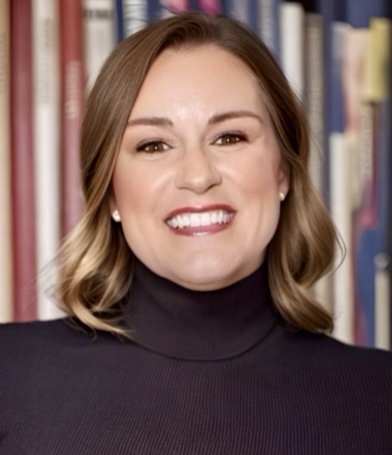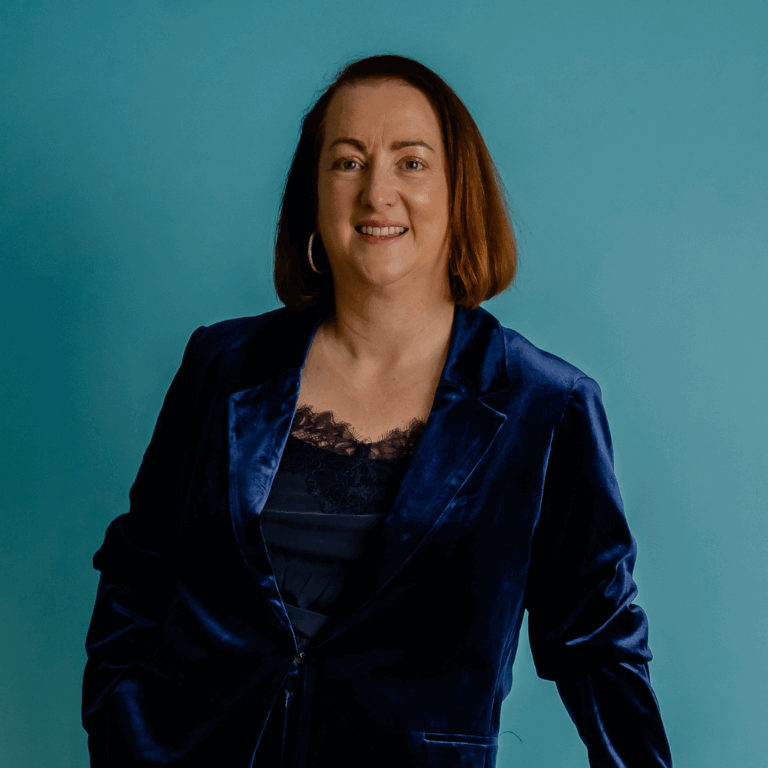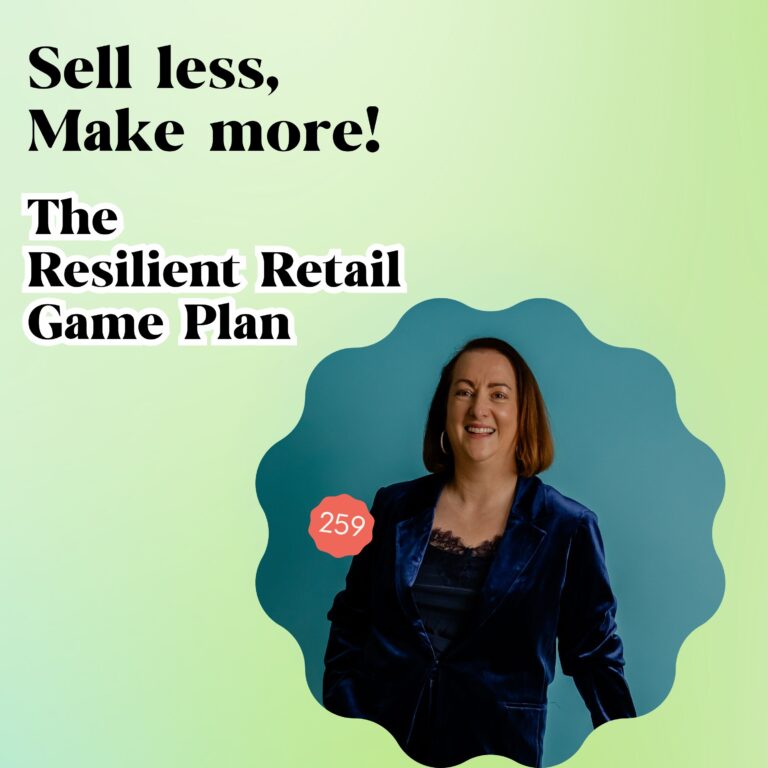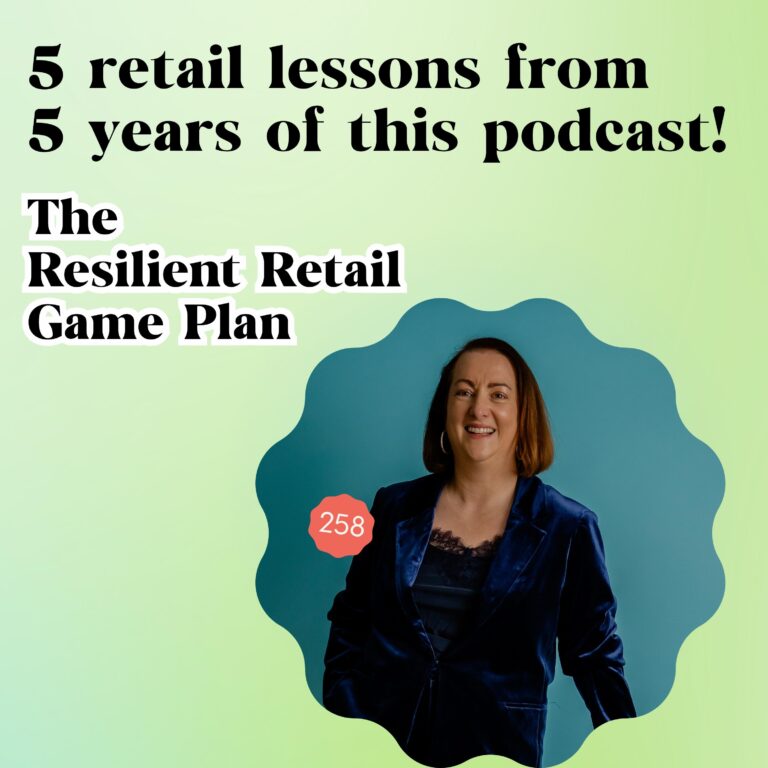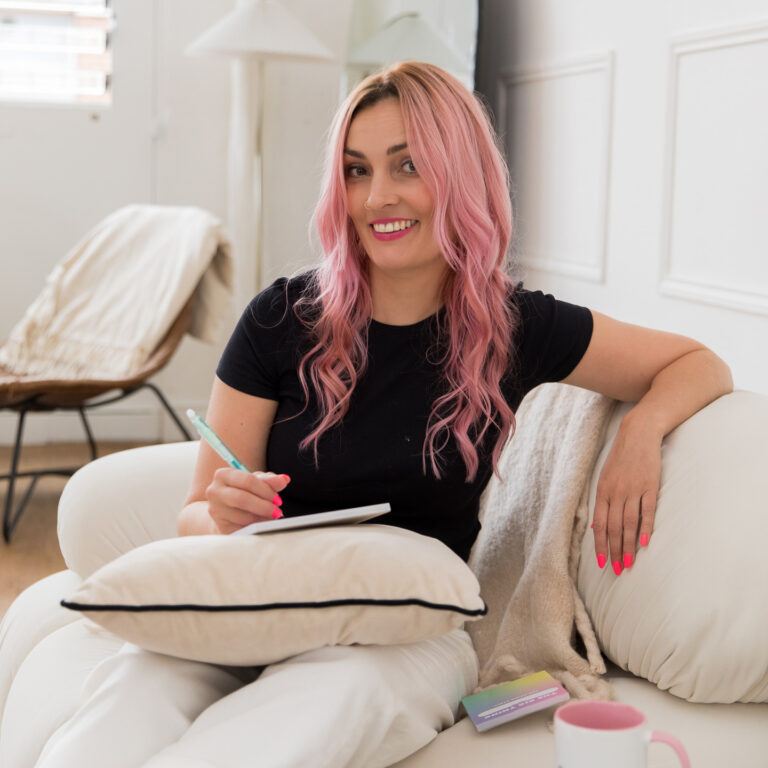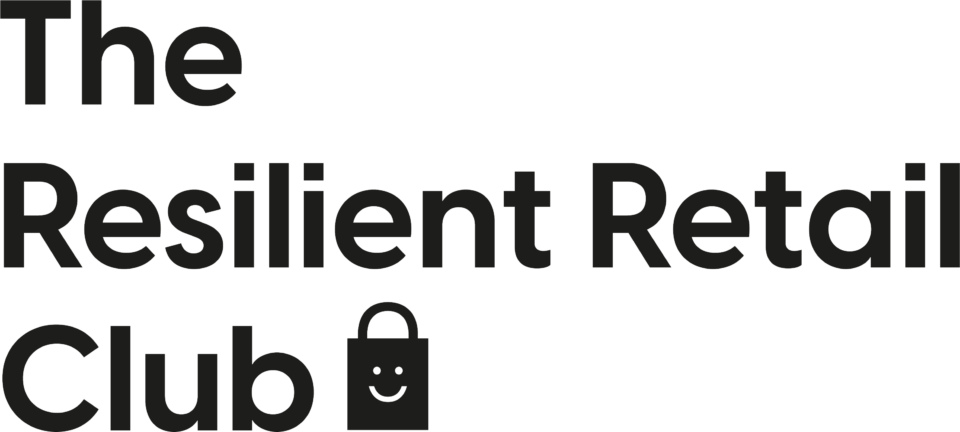Secrets to Creating Irresistible Christmas Products with Joanne Griffin
Catherine Erdly: What is the secret to creating products that your customers can’t wait to buy from you this Christmas? That’s what we’re going to be tackling in today’s episode.
Welcome it is episode 207 of the resilient retail game plan podcast. I’m your host, Catherine Erdly. I’m also the founder of the resilient retail club, which is my membership group and mastermind for product businesses. You can find out more at resilientretailclub.com.
And today’s episode is the fourth in a series of Six, which is all about getting ready for Christmas. So if you haven’t listened to the others, you can find out all about how to plan for Christmas, how to approach it with new energy, how to think about the structure of your products at Christmas.
And today’s episode, we’re carrying on with the product theme, and I’m joined by a very special guest who’s coming back to the podcast, Joanne Griffin is the founder of the Creative Flow Collective, and she’s also an expert at product development and design. We’re going to be discussing how to use customer research and trends to find the perfect products that will help you stand out this Christmas.
Welcome to the Resilient Retail Game Plan, a podcast for anyone wanting to start, grow or scale a profitable creative product business with me, Catherine Erdly. The Resilient Retail Game Plan is a podcast dedicated to one thing, breaking down the concepts and tools that I’ve gathered from 20 years in the retail industry.
and showing you how you can use them in your business. This is the real nuts and bolts of running a successful product business, broken down in an easy, accessible way. This is not a podcast about learning how to make your business look good. It’s the tools and techniques that will make you and your business feel good.
Confidently plan, launch and manage your products and feel in control of your sales numbers and cashflow to help you build a resilient retail business.
Welcome JoAnne Griffin
Catherine Erdly: Joanne thank you so much for welcome back to the podcast. I should say, do you want to start off by introducing yourself?
Joanne Griffin: Yeah, thank you Catherine for having me back again. It’s so nice to catch up. And yeah, so my name is Joanne Griffin or Jo and my business is the Creative Flow Collective. I work one to one or in group retail mentoring with creative product based businesses, just really helping them on their products, pricing, planning.
So just really all about growing their sales, helping them with that retail knowledge. And just really working on that support and accountability. Cause obviously, as mindset’s really important. So yeah, I just want to create that all around retail strategy basically for businesses.
Catherine Erdly: Amazing. And you’ve also got such a great like depth of knowledge when it comes to product trends and product creation. Do you want to talk us a little bit through your background as well? Oh,
Joanne Griffin: Yeah, of course. So yeah, so I did a design degree myself. I did surface pattern at Staffordshire university and graduated from that in 2006. And then I went into retail and e commerce. So my first job was working in bricks and mortar. So So going from sort of sales assistant to manager while doing visual merchandising and wholesale and just all bricks and mortar retail along the way.
Then I went to work at notonthehighstreet.com. So I spent seven and a half years there and again, did loads of different things. I joined when it was 18 people and left when it was 200. No one knew not on high street. com when I first started working there and then when I left people like, Oh my God, you’re the girl who works there.
So very different. So yeah, I do see like new business working on the catalog. I did merchandising so like sales analysis and I would write the sales guide, the trend guides for the 5, 000 sellers when I left as well. So yeah,
How do you look at customer feedback and your sales data to work out what’s gonna be hit at Christmas?
Catherine Erdly: That kind of brings us straight on to what we’re talking about really Which is about how do you create products that sell at Christmas, which is the whole theme of this episode? So let’s start with then things like your customer feedback and your sales data So how would you suggest starting looking at those to work out what’s gonna be hit at Christmas?
Joanne Griffin: Yeah, exactly. So I know you’re big on your numbers, Catherine, and I am too. I’m very creative, but I just think your data gives your products a much higher chance of succeeding. So we need to use it. So it’s just so important to know your numbers. And I just think sometimes, I think some people I’m the same when it comes to mass.
I’m like, Oh, I freeze. It’s I dunno if you’re, if mass isn’t your thing, sometimes it can feel a bit like icky, but knowing your numbers and diving into your data can just give you so much information and it can really add to your creativity as well when it comes to product development.
So I think having that blend of. that dreaming, designing stage, but adding in the numbers can really be an amazing blend. So whether you’re designing or buying, you know, you need to know your numbers for sure.
Catherine Erdly: So talk us through a little bit about customer feedback. So would you suggest, so I guess with your numbers, we’re talking about looking back at last Christmas, right?
Joanne Griffin: exactly. Like analyzing that data, asking yourself what did you sell out of so that maybe you possibly could have solved more of what did you have extra stock or leftover of what’s the difference between your bestsellers, you know, in terms of money money, it brings in and like the units.
Cause obviously there’ll be products of different price ranges and your price architecture as well. And then really thinking like, why are the bestsellers? Is it who. People are buying them for, is it the materials, is it personalized, is it the photography, the recipients, looking at what category, yeah, the price point, what categories sell well as well.
If you know that your stationery range sells better than your print range, let’s look at expanding that for example. and just looking when products peak. Throughout Christmas and throughout the year as well. So I think asking yourself those set of questions as well. It’s just really important.
Catherine Erdly: And when you say customer feedback, is it worth paying attention to what people asked for that you didn’t have? Or could that be a bit of a red herring do you think?
Joanne Griffin: Yeah. No, I think market research is so important when it comes to your product development as well. So really, listening to what your customers say, because, and again, even if it’s just Your customer’s oh, I’m buying your product and I gifted it to them. Or I bought your product and I used it in this way.
Or I bought your product and it made me feel like this. That’s why people are buying your product. So you can use that in your marketing as well. But then also you’re like, okay, people are really buying this product and they’re buying it as a gift for their sister or a gift for their best friend.
So do you need to create a range of products that are more gifts for sisters, for example, if that’s actually a range, that it’s like, there’s someone who’s buying it, but the recipient is this. So you now need, to know that to then use that in your product development. So there may be actually, you can take one of your other products.
But just gear it towards either, whether it’s the personalization, the photography, the product description, or a slight tweak could then create a new bestseller because, you know, you’ve got products that are selling well in that area already as well. So I think definitely using that, obviously, your customer could come along and give you an idea that’s completely random.
You’ve got to you’ve got to combine it with what you know about your brands your sales and what you know works as well.
How can you gather customer feedback on why they purchased your product?
Catherine Erdly: That’s such a good point. But do you think that’s easier to do maybe when you are at a face-to-face event if or do you think you could, I suppose you could always put like a little questionnaire or even something on stories like who you’re buying for or that kind of thing,
Joanne Griffin: Yeah, definitely. I think events are great for sure, whether that’s like a craft fair or even a trade show. Definitely, speak to your customers then, that’s the prime time to do that. But then, engage with your customers in, your DMs, if they’re going to reply to your stories. Engage with them back.
Oh, hi. How’s your day been? Or what did you buy that for? How did the person like it? How are you using it? Or like you said with polls as well on Instagram stories or Facebook as well. Definitely question boxes, quick polls, make it easy for them to reply first of all, and then build it up to more in depth things as well.
Catherine Erdly: because it’s probably useful to know just even simply are you buying it for yourself or for somebody else, right?
Joanne Griffin: Yeah, exactly. For sure. I feel like a lot of creative businesses, products are bought as like gifts, the maybe your business is different as well. So it’s trying to think about why people are buying it, for example. And then, yeah, if you are more gifts, then do you want to lean more into that?
Or how could you bring in more self purchase as well?
Catherine Erdly: Yeah, for sure. Although I always feel like whenever I’m in Christmas shopping mode, I always feel like you see things and you’re like, Oh can I get this for myself? Even though I’m in Christmas shopping bags,
Joanne Griffin: Yeah, that’s so true. Yeah, I know. It’s actually like one for them, one for me.
Catherine Erdly: yeah, exactly. I bought one present.
We quite often go to Spirit of Christmas in the food area. We end up buying loads of all of our like, treaty Christmas stuff, like the nice Christmas pudding and things like that. And then I’m always like how many actual gifts have I got? So there we are.
There
Joanne Griffin: This food area at Spirit Christmas is so dangerous. The amount of cheese I’ve eaten in that area before.
Catherine Erdly: ha ha Ha.
Joanne Griffin: agree with you there.
Catherine Erdly: So all of that is, yeah, all of that is super useful knowledge then to, just to create that understanding and as you say like, just to like tweak the wording and everything like that.
How do you cut through the noise to get your customer’s attention at Christmas?
Catherine Erdly: So one of the other things about Christmas is that it is very noisy.
It’s a very noisy time of year. Everybody’s out there trying to go after that Christmas spend and get the customer’s attention. So when you’re, developing your Christmas products. How do you advise people to figure out and also to showcase what makes them special what or how to capture their brand USP?
Joanne Griffin: Yeah, exactly. So I think, you know, I know, you know, you always say it’s like the 80 percent 80 20 rules. So looking at what 20 percent of your product range is making 80 percent of your sales. So really starting there. But I think as well, the one thing I’ll say about Christmas is so many people think.
Okay. Christmas going to make some decorations, some baubles, some, like really Christmas themed products, but there’s so many other products that are going to be selling at Christmas. So really thinking about right. What is specific for you in your product range it’s going to work.
So you’ve got your main presents, you’ve got your stocking fillers, maybe your secret Santa. Hostess gifts with all that food from, spirit of Christmas, for example, to make up nice hampers is thank yous as well. You’ve got your things like your adventure decorations, you’ve got your cards and wrap as well, tags, but you’ve also got, preparing in the home as well, or food and drink and entertaining hosting.
You’ve got, your party wear, the dresses you’re going to be wearing or the jewelry you’ll be wearing, like the jewelry you’ll be wearing for your Christmas party and the jewelry Gifting as well. Accessories, bags, scarves, or, even just winter warmers, gloves and hats and things like that.
Christmas PJs, all of this. There’s so many different types of products. So I really think don’t just concentrate on the solely Christmas products or thinking that everything has to have a snowman or a mistletoe on it as well. Really thinking about all the different reasons why people are buying as well as for self purchase as well as for gifting as well.
And then I think for me, the biggest thing about standing out, it’s like I’ve done this as like a visual before, but it’s three kind of circles. So it’s like your brand in one of them. So this is all about you, your USPs, like really knowing why you’re unique and why you stand out. Then you’ve got your customer, like an overlapping Venn diagram, basically and then you’ve got your customer as well.
Who are they? Are they buying for themselves? Are they buying for other people? Who are they buying for? What are they all about? Where are they hanging out? Then you also want to overlap at the bottom as well, being relevant. So you can call this trends, you can call this inspiration, you can call this your design style.
So it’s getting that balance between all of those three areas as well. You want to make sure that when you are developing products, it still fits within your brand. Your customer’s going to want it, but it’s relevant. If you’re doing, still doing, maybe keep calm and carry on.
I mean, Sometimes I know on like places like I’m cheerfully given, I know that was still quite popular a few years ago, but I know that was a very big trend to say 15 years ago. So it’s where are you? Where is your customer as well? And just making sure that being relevant stage is applicable to you as well.
Catherine Erdly: So you talk about USP or unique selling proposition or unique selling points, however you want to put it. It’s not like it’s going to be different at Christmas than it is the rest of the year. You should know what makes you sort of unique and different all year round.
What if you don’t know what makes your story unique?
Catherine Erdly: Do you have any tips if someone’s oh, I don’t know why am I unique?
Joanne Griffin: I feel like everyone sayss that they’re like, Oh, there’s nothing special about me. And they’re like, even if it’s just down to you, you as the business, like people could go and buy from two different print companies with very similar prints, for example, but maybe the fact that it’s like it’s the charity that they donate to, or it’s about the fact that this person’s all about, making your customer feel good and spreads a positive message in their marketing.
It comes down to you as well. But I think in terms of that, it’s like questions to ask yourself, like what, how do people compliment you? What do people say about you? What do people say about your products? What are you really good at? What’s important to you in terms of your values, both personal and business as well?
A lot of creative, small, smaller product based business owners, like they do this because it fits around their family, maybe they have family products as well. Could it be the fact that, you’re having this flexibility to work so you can be with your family?
That’s something that, probably if you’re selling products that are family related or children related, your customer will relate to as well. So as it’s really asking yourself certain questions like that as well. So I know that we always used to, when we used to run in person workshops together years ago, But Simon Sinek, the power of why we’ll start with why talk as well, like going back to that, it’s Rolex don’t just sell watch watches.
They sell luxury, Red Bull doesn’t sell energy drinks. They sell adrenaline, so it’s like bringing through that element, you more high quality than, than your competitors on Etsy. And that’s why you charge more. Is it the family run? bit. Is it the positive attitude?
Is it the sustainability? There’s going to be things. It’s just you’re so close to your business as well.
You’re so close to it. So you’re like, of course, everyone knows this. They don’t, they really don’t, which is why taking a step back and getting other people’s feedback as well.
It’s really important for sure.
Catherine Erdly: Yeah, for sure. And I also think as well your location can be a huge part of it. More and more businesses that may be talking about prints, like that maybe are prints of a very specific area or it’s featuring a local area. And I was in the curated maker store in Battersea power station earlier this week, which is a beautiful store, lots of small independent businesses, and they really curated all of lots of Battersea and South London themed products.
And it was, really, really nicely put together. And you can see it’s really appealing if you, you’re a customer from Battersea and you walk in and you can have a really lovely mug with Battersea Power Station hand painted on it, this kind of thing. And I think that sometimes your local connections can be a really big source of a USP as well.
Joanne Griffin: Yeah, no, definitely. And, and even if there’s a lot of visitors that go to London or to wherever you live as well, and maybe they’ve had a lovely like weekend away or a day trip and how many times have we bought that print or that mug or that tea towel is a really good one for your location as well.
And that, so location is wherever you live there and you’re proud to live there, or you’ve just visited there and you love that as well. Yeah. And then. This is such a big thing, like utilizing your local community, getting involved, could you put up information in your local coffee shop, could you do pop ups in your local hairdresser, for example, if you know your customer is that kind of customer who’s going to this certain hairdresser or beautician, and you can have a little pop up store there or posting local Facebook groups, that’s all just such a great way.
And again, then you’re getting out more chatting, Getting, understanding why people are buying, who are your customers as well. And yeah, getting out to meet that local community and getting feedback on what you could develop as well.
Catherine Erdly: Yeah, for sure. Okay, so that brings us on then about going back to creating products, you touched a little bit on market research but, if you think about the kind of whole process of creating market research. We can, so we can talk to the customers.
What are some ways you can do market research to create products that are relevant?
Catherine Erdly: But what are some of the other things that you would suggest that you do to Basically, we’re trying to create things that the customer wants, really needs and likes.
And I suppose it comes back to that being relevant piece, doesn’t it?
Joanne Griffin: Yeah, exactly. So I know a lot of businesses hate the word trends, which is fair enough, but again, you’re still being influenced by things, how many, even the, the Bridgerton audio that you’re using on Instagram, for example, that’s a trend at the moment, because Bridgerton’s come back out again, and that will come back in, whether it’s like the lilac color or whatever it is, that will still be feeding in.
So again, if you don’t want to use trends, that’s inspiration. That’s what’s going on culturally as well is super, super important
Catherine Erdly: Oh, and Bridgerton. Bridgerton’s also reflecting in that wider trend about romanticizing your life and bows and frills and some of the colors. So it’s almost like it’s, yeah, like people just looking for something a bit, yeah, romantic,
Joanne Griffin: yeah. Or just like being swept away into that world of like, I don’t know, being swept off your feet or yeah, just that kind of, yeah. Romanticizing your life for sure. Yeah. And like you said, the kind of styles of like frills or bows, that kind of lovely aesthetic there as well. Yeah, and exactly, you are going to take that in, even if you’re like, I don’t follow trends, you’re going to take that in and be like this is going on.
And, And like, if you’re like super minimalist, don’t take that on, for example, or maybe just take on a color. If that suits your brand, again, come back to your brand being relevant and your customer, then bring that in to your, Whether that’s your visual merchandising in if you’re doing a market, for example, or your marketing, maybe your colors and what you do with your marketing or in your actual product element as well.
So think about it in like lots of different ways
How can you do market research?
Catherine Erdly: Where would you suggest people do this research then?
Joanne Griffin: So with market research, like I’m obsessed. I think it’s amazing. I don’t think many people do it, and I think it’s so underrated. I always suggest starting off with a survey, just using something like Google Forms, because then you have unlimited people feeding into that.
So easy to set up, you can create a list of open ended questions, so you get people to expand more. And then I don’t know, Tick box questions, so it’s just they can fill it in easily as well. Maybe it’s only five to 10 questions that you ask them. And, maybe then you give them like a discount code to use on your site.
Or maybe you say I will pick one winner to win a gift voucher, or you don’t have to do an incentive, but it just, again, it’s the reason why people to feedback to you as well. But then literally, especially with like things like the open ended questions, you can literally use your customer’s words in your marketing.
And then as well, you can get direct feedback on what people want. You’re not just assuming what people want as well, which is obviously, how often are we spending our time doing this? I’m not, people want to hear this or no, you can literally go and ask them what they want to hear about as well.
You can ask them whatever brands they follow that are similar to you, and and why, for example, so then you can look at what are they doing, or could I collab with them, whatever brands do they like to follow, or businesses or accounts, because then again, maybe they follow certain interior designers and maybe you could do a a collab with them as well.
What kind of other products do they buy? Say again, you sell a lot of stationery. What other stationery do they buy? Or, if you have more sustainable product range, for example, what other sustainable brands do you follow and why? And again, like having a look what, what are you buying from them specifically as well, okay, from them, I’m actually buying.
More like household items, but you’re selling more gift items. So again, it’s like looking at what kind of product categories you can go there. You can literally do check boxes. Like I’m thinking of developing these types of products. What are you most interested in and getting them to tick?
You could ask them an open ended question. If. Insert brand name were to bring out any new product. What would you love to see? And just get them to add in there as well. Again, take a pinch of salt, see what comes up for sure. Like who else they buy from, all of these questions you can ask them and.
Yeah. And also just asking about their buying habits as well. So average day look like for you, where do you hang out online? Yeah, just asking them a mix of questions like about them, about their buying habits, what they would like to see. And also you can ask them like what words come to mind when you think of my brand?
Then you’ll tap into your like
Catherine Erdly: Ah.
Joanne Griffin: What comes up to mind when you think about my brand? And then you’ll literally know why your customer is buying from you. I’m following you or engaging with you as well. And then you can bring that into your products and your marketing for sure.
Catherine Erdly: Yeah.
Joanne Griffin: so I think just use it, please. And then also add a box at the end that says, would you like to follow up on a call? I know a lot of people hate calls, but like having a couple of calls with people and recording it on like zoom and then translating it, oh my God, I did this, done this a couple of times and it’s just, it’s amazing.
Such pure gold that comes out of
Catherine Erdly: Yeah, I agree.
Joanne Griffin: it enough.
Catherine Erdly: I recently did it. I spoke to quite a few people one to one and yeah, it’s just brilliant. It’s really understanding. I think, I always feel like I know my, my audience. I know my community really well, but just really taking the time to talk to people in depth. about what they need support with it was just brilliant.
And I’m sure, for product businesses, you’ll learn an awful lot about the way that people use your products, the way they think about them, what’s important to them when they buy, because that’s not always apparent. Is it like, what is it? We think it’s always the price, but they could, it could be that they’ll say, actually, do you know what I really care about is if I buy these leggings for my child, are they going to look nice after the fourth wash?
Or, it’s that sort of thing
Joanne Griffin: Yeah, exactly.
Catherine Erdly: really useful to, to pick up on.
Joanne Griffin: And as well, like it’s that, it’s like trans late, like literally transcribing their words and said if you can use their words, like if you’ve got a customer testimonial, it says even after 10, 10 washes, these leggings still look perfect. That’s such a good thing to use in your product description and your marketing.
Cause again, like then you find out, cause again, it’s hardly ever about the price. So it’s talking about like why people are buying it and what, how it’s, how you stand apart as well, for sure.
Where are some of the places that people can look to find out more about trends?
Catherine Erdly: Yeah. Okay. Thank you so much. Great tips there. And then, so coming on to trends then, so we’ve touched on market research, but then if we move on to the trends, so we’ve thought about the importance of the buzz. Where are some of the places that people can look to find out more information?
Joanne Griffin: Yeah, for sure. So there’s lots of if you subscribe to the big trend plate of things, you’re going to be spending like thousands of pounds, but there’s lots of free information you can get for sure. Trend sites like Pattern Curator, WGSN Trend Bible and Pattern Bank are just some that will, give away good information there as well.
So I would recommend following them on Twitter. Signing up to their newsletters, following their blogs, following their Pinterest, for example. Yeah, that’s a great source of inspiration that you can get. Pattern Creator do lovely mood boards, for example. Pattern Bank have loads of, they talk about, I think they do like, catwalk trends as well as like different trending like patterns as well.
But then obviously a lot of people as well will be selling on not on high street.com or Etsy. So Etsy do great trend information. Not on High Street. do.com has a whole thing called Spark as well that has loads of trend information there. So if you’re seller on there, then definitely using that and then just going like comp shopping, so seeing what is in window displays, so things like John Lewis.
We don’t know if I like say anthropology anymore because I know they’re like quite bad at copying small businesses but again their window displays all like Liberty J. Crew, those kind of places, seeing what’s in store or what they’re putting in their windows is really good as well.
Catherine Erdly: Yeah, I always stress this to my clients when I’m talking to them about how much money big retailers spend sending their buying and design teams around the world to get ideas because they know that if you just sit in the same room every single day and try and think about new things without seeing new things, it’s very hard to do it.
So if you’re feeling stuck and uninspired, I always think go to go to where Your customers are go shopping, go to go see other brands doing or even other brands in totally different product areas. But maybe there’s some relevance. Or also, I was when I worked at coast, for example, the buying and design teams would go to all of the races and Henley regatta and all of these events because it was an events brand and they needed to know what people are wearing.
If you sell festival jewelry or clothing, like here’s your green light to go to the fest, go to the festivals for research just get out of your, Get
Joanne Griffin: Bubble.
Catherine Erdly: bubble, basically. Yeah,
Joanne Griffin: it’s and looking outside of your niche for inspiration is like so important as well. So yeah, like you said, I know for me, even me, like I need to get out. I need to be around people. If you just sit in your house all day working, it’s just not good. Not good for you mentally.
Inspiration. Yeah. You need to get out and speak to people like, or networking as well. Yeah. Chatting to people, like what other people are doing, what other people seeing in the industry, or just having that conversation, even if it’s just more of Oh my God, yeah, you feel like that too.
That’s great. It’s so important.
Catherine Erdly: And I think that it’s easy to feel uninspired and think, Oh, I don’t know what I’m going to do. But if you don’t, then just go spend a day, go to, galleries, go to museums, go just get, go see different visual things and just see what happens. It’s often, it’s when you’re just sitting there trying to be creative, it can be really hard sometimes, can’t it?
Joanne Griffin: Yeah, exactly. Where I said, it’s yeah, it’s the data, it’s your customer, it’s you. And it’s that being relevant. Yeah. It’s bringing all of that in for sure. That good, a good mix of things. Yeah,
Catherine Erdly: so Golden nuggets of information as always. Do you want to tell everyone where they can find you?
Joanne Griffin: for sure. So yeah, if you search Creative Flow Collective, I’m over there on Instagram and Pinterest are the main places that I hang out or my website’s creativeflowcollective. com as well.
Catherine Erdly: Thank you so much for listening in. Why not head over to Resilient Retail Club and show me where you’re listening to the podcast. I absolutely love to see your photos and why not take a moment to rate and review the podcast? You can rate and review it in Apple Podcasts and you can, of course, follow it and rate it inside the podcast.
Spotify as well. And if you follow subscribe, whatever it is on the platform that you’re listening to it, you’ll be the first to know about every new episode that comes out each week on Thursday morning.


